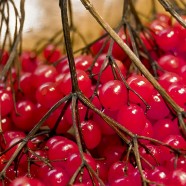
Anti-aging is a hot topic today even though the topics of ill health are always in the forefront of media communication. It’s no secret that people do not want to just have great health, they also want to look well and retain their youthfulness for as along as possible. You may sometimes wonder why some people appear 10 to 15 years younger looking than their chronicle (real) age, while others appear well beyond their years. Appearance is far from being definitive as an indicator of good health.
Viewing ourselves in the mirror is only a small portion of what is really happening within our bodies. Although one indicator would be how you feel and function on a daily basis. For instance, do you have pain, stiffness, lack of energy, poor memory and digestion problems or are you suffering with an illness? These symptoms and many more are indicators showing how well your body is coping in its renewal process and functioning, all of which will impact the aging process. The information within this segment will focus on certain nutrients that have a great effect on your current health status and longevity.
Number 1 and Number 2 Greatest Anti-aging Benefits
Not unforeseen, according to scientists, diet significantly impacted ones health and longevity. A British study in 2007, involving 20,000 men and women, over a span of 15 years, reported on factors that were most important in extending life. Number one was quitting smoking and perhaps surprising, number two was eating five servings of fruits and vegetables everyday. Following fruits and vegetables, moderate consumption of alcohol and exercise, extended people’s lives on average by 14 years longer that those who did not adopt the above lifestyle.
Health is not found in a miracle pill, it is a way of life. Nutrition rebuilds and regenerates tissue without poisoning some other part of the body. The right biochemical elements accelerate health and the disease reversal process.
What Special Property is found in Fruits and Vegetables?
Foods rich in flavor, color and aroma contain anti-aging and anti-inflammatory constituents called flavonoids. The primary property and benefit of flavonoids is their antioxidant value in plant based foods. There are 4,500 flavonoids which fall into several different categories.
Only Antioxidants from Fruit and Vegetables Impact the Aging Process
While there is good evidence to support the role of oxidative stress and aging, there isn’t supportive research showing that antioxidants in the form of supplementation being able to retard the aging process. Large clinical trials have not detected any benefit as demonstrated in the following statements which would then suggest the other aspects of the plant based antioxidants are the key differences.
Thomas D. (2004) conducted studies using vitamins for health and aging; reports stated, “Diets high in fruit and vegetables, which are high in antioxidants, promote health and reduce the effects of aging; however antioxidant vitamin supplementation has no detectable effect on the aging process, so the effects of fruit and vegetables may be unrelated to their antioxidant contents.” Clin Geriatr Med. 20 (2):259-74. PMID 15182881
On a similar theme, studies were performed on molecular dietary agents for the prevention and therapy of cancer, by Aggarwal BB. and Shishodia S. (2006). Their findings showed benefit to consuming whole plant based nutrition as noted in the following statement. “One reason for this might be the fact that consuming antioxidant molecules such as polyphenols and vitamin E will produce changes in other parts of the metabolism, so it may be these other non-antioxidant effects that are the real reason they are important in human nutrition.” Biochem. Pharmacol. 71(10):1397-421doi:10.1016/j.bep 2006 02.009 PMID16563357
Major Culprits in Disease and Aging
Based on massive research, the role of free radicals has been proven to initiate disease and to enhance the aging process. Free radicals cause oxidative stress associated with a wide range of aliments including Alzheimer’s, Parkinson’s, Diabetes, Atherosclerosis, Neurological deficits, Cancer, Arthritis, Pain and Inflammation and many more.
What Creates Free Radicals in our Body?
Free radicals can be beneficial when in the form of a byproduct, which occurs naturally in the body’s metabolic processes. However, the environment and dietary deficiencies create the setting for destructive free radicals. These come in the forms of industrial contaminants, metal toxicity, toxic products and pollutants such as herbicides, pesticides and insecticides. In addition, elevated levels of microbes and pathogens enhance free radicals, to include parasites, fungus, yeast, bacteria and viruses, as well as vaccines, drugs and misaims. The body is set up for the production of free radicals through the lack of vitamins and minerals, antioxidants, amino acids and enzymes.
What is a Free Radical?
A free radical is an unstable molecule that steals electrons from our own healthy cells trying to stabilize themselves. Imagine balancing yourself on one leg. When this occurs, we experience some damage to our DNA as well as a protein molecule can become dysfunctional. For many, this may not seem like much but all these little damages can really add up.
Antioxidants to the Rescue
Antioxidants Balance Free Radicals in the Body
An antioxidant is a molecule that prevents or slows the oxidation of other molecules. Antioxidants generously offer up their electrons to free radicals to prevent cellular damage. Unfortunately though, each time an antioxidant neutralizes a free radical, it then stops being able to function as an antioxidant.
The body makes a great attempt to protect itself from free radicals through endogenous antioxidants manufactured by our bodies. To successfully combat the excessive amounts of free radicals and their subsequent damage, we must support our body in this process with live, whole foods and supplementation to pick-up all the shortages not normally consumed in the diet, yet necessary for the body to perform optimally. Herein lies the great value of consuming several fruits and vegetables on a daily basis since many of these foods have exceptionally high levels of antioxidants which support our systems in the areas of function and protection. Antioxidants are our first line of defense against aging and cancer.
Fast Acting and Slow Acting Antioxidants
Antioxidants are classified into two groups: Water soluble (hydrophilic) or lipids (hydrophobic). They also fall into fast and slow acting responses in the body. A slow acting antioxidant example is classified as a complex organic antioxidant such as phenolics while a fast acting antioxidant example would be vitamin C.
Is the ORAC Score Definitive
The oxygen radical absorbance capacity (ORAC) is one of the ways of measuring the antioxidant ability of a food or health product to scavenge free radicals. Unfortunately these numbers may be deceiving. Many companies will go to any length to mislead and misinform consumers. A food or products ORAC value can be manipulated by enhancing it with artificial additives or vitamins in order to boost a false value claim.
The following is a comparison chart of ORAC capacity of fresh, raw or cooked fruits and vegetables. These values were published in the Journal of Agricultural and Food Chemistry which is the highest ranked journal in applied chemistry, agriculture and food nutrition.
Fruit
(micromoles TE/g)
Acai fruit (freeze dried) – 1027
Acai fruit (fresh) – 185
Acai (spray dried) – 5-155
Cranberry – 95
Blueberry (low bush) – 93
Plums (black) – 73
Plums – 62
Blueberry (cultivated) – 62
Blackberry – 53
Raspberry – 49
Apple (red delicious) – 43
Acai (frozen) – 40
Avocado – 19
Pears – 19
Orange – 18
Peaches – 18
Grapefruit (red) – 16
Apricot – 13
Grapes (red) – 13
Mango – 10
Kiwifruit – 9
Bananas – 9
Pineapple – 8
Nectarines – 8
Cantaloupe – 3
Honeydew melon – 2
Watermelon – 1
Vegetables
(micromoles TE/g)
Artichoke (raw) – 90
Peas (black eye) – 43
Butterhead lettuce – 33
Cabbage (red) – 31
Broccoli – 30
Asparagus – 30
Beets – 28
Spinach – 26
Eggplant – 25
Potato (red) cooked – 13
Carrot – 12
Lettuce (leafy) – 12
Onions (red/white) – 11
Potato (white cooked) – 11
Radishes – 10
Salsa – 10
Peppers (sweet) – 9
Sweet potato cooked – 9
Cauliflower – 6
Celery – 6
Green peas (frozen) – 6
Peppers (green) – 6
Corn (frozen) – 5
Snap beans – 3
Tomato – 3
Cucumber (with peel) – 1
It is important to understand that the performance of an antioxidant may be influenced by several factors such as an existing disease, poor diet and unhealthy lifestyle, excessive consumption of alcohol or cigarettes and environmental toxins. Additionally, infections, internal micro bacteria, digestion and enzymatic activity can all have an affect the absorption and utilization of antioxidants.
To promote health and wellness we need the phytochemicals found in the color variety of foods, our primary source of antioxidants. Foods high in antioxidants have a positive impact by increasing our body’s energy and resistance. They also help to maintain our ideal body weight and improve our response to stress.
Antioxidants Enhance Your Immune System
This brilliantly orchestrated system tirelessly fights off foreign invaders from many different sources throughout the whole body. By raising the integrity of this system will ensure the future health of those already well, lessen the frequency of infections, speed up recovery time from illness and improve chronic disease.
Numerous studies show antioxidants to be preventive and therapeutic for health problems from diabetes and cancer to general deterioration of the body. We are constantly exposed to free radicals, with every breath we take and every chemical we eat. Scientists estimate that each cell takes about 10,000 free radical hits per day from air and car pollution, alcohol, cigarettes, food additives, caffeine, heavy metals, medications and unnecessary drugs. Antioxidants are our best friend. They keep free radicals in check before they can impair our immune system and damage our cells.
Alpha Lipoic Acid
Alpha lipoic acid has gained a lot of attention since being proclaimed as the near perfect antioxidant. Alpha lipoic acid is a vitamin like substance that was first discovered in 1930’s but it wasn’t until 1988 that research revealed its potential. This unique antioxidant has a number of benefits from extending the life of other antioxidants to being at home in both water and lipid environments where it devours free radicals. Alpha lipoic acid easily crosses cell membranes and once inside the cell becomes an even stronger antioxidant. It has also shown to play a key role in many enzyme systems.
For the past thirty years throughout Europe, alpha lipoic acid has been used to treat diabetes by assisting with stabilizing blood sugar. Dr. James B. Lavalle, R.Ph., CCN, ND and author of Cracking the Metabolic Code, recommends six hundred to nine hundred milligrams of alpha lipoic acid daily for its antioxidant capabilities. Other conditions which can benefit from alpha lipoic acid include cataract prevention and neuropathy where by improving nerve blood flow and regeneration of nerve fibers. It also increases Glutamate, an important liver enzyme while aiding the conversion of the food we eat into energy. So it would seem that the addition of supplemental alpha lipoic acid would enhance the health of the whole body.
Selenium and Vitamins E and C
Other antioxidant heavy weights include selenium and vitamins E and C. These nutrients perform uniquely when taken together, working synergistically; enhancing their ability to remove heavy metals and detoxify the body. Their performance as a team works wonderfully in destroying free radicals along with protection of the heart and improving circulation. Harmful free radicals in the body damage the cells and fuel the aging process through cell mutation and cell death. Furthermore, selenium and vitamin E bind to toxic metals, such as cadmium, mercury, silver and thallium to be removed from the body.
Carotenoids Destroy Free Radicals
Carotenoids, including beta-carotene, lutein and lycopene are powerful antioxidants. All of these and more stimulate the natural killer cell activity and antibody response in the body. This action is reported as protection against different forms of cancer. Beta-carotene is a precursor for vitamin A and is found in yellow and orange fruits and vegetables. One molecule of this voracious phyto-chemical can destroy up to a thousand free radicals.
Balance throughout the human body is what we seek to sustain in holistic health.
Copyright © 2017 – All Rights Reserved – Michelle Honda Ph.D.
Announcement
Look for my new forthcoming books “Reverse Heart Disease Naturally” (Jan.31, 2017) and “Reverse Inflammation Naturally” (May 31, 2017) and “Reverse Thyroid Diseases Naturally” (Fall 2017)
Where to Purchase:
Reverse Gut Diseases Naturally
Reverse Heart Disease Naturally
Reverse Inflammation Naturally
Hatherleigh Press Page Buy Book RGDN
Local Book Stores in US and Canada
Disclaimer
While close attention was given to the accuracy of information in this article, the author accepts neither responsibility nor liability to any person with respect to injury, damage, loss or any circumstances involving alleged causes directly or indirectly related to the information in this article. The sole purpose is to educate and broaden ones awareness. This information is not meant to replace medical advice or services provided by a health care professional.





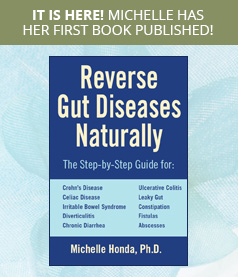

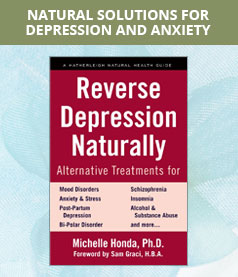
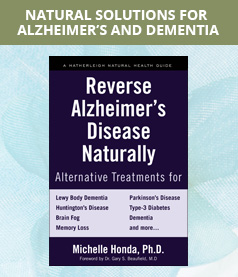
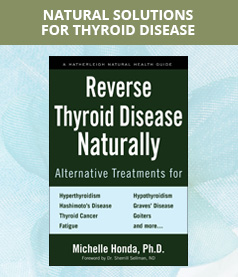

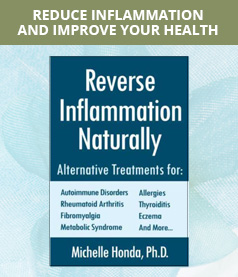
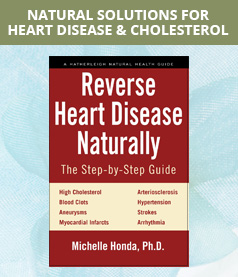
Follow Us!